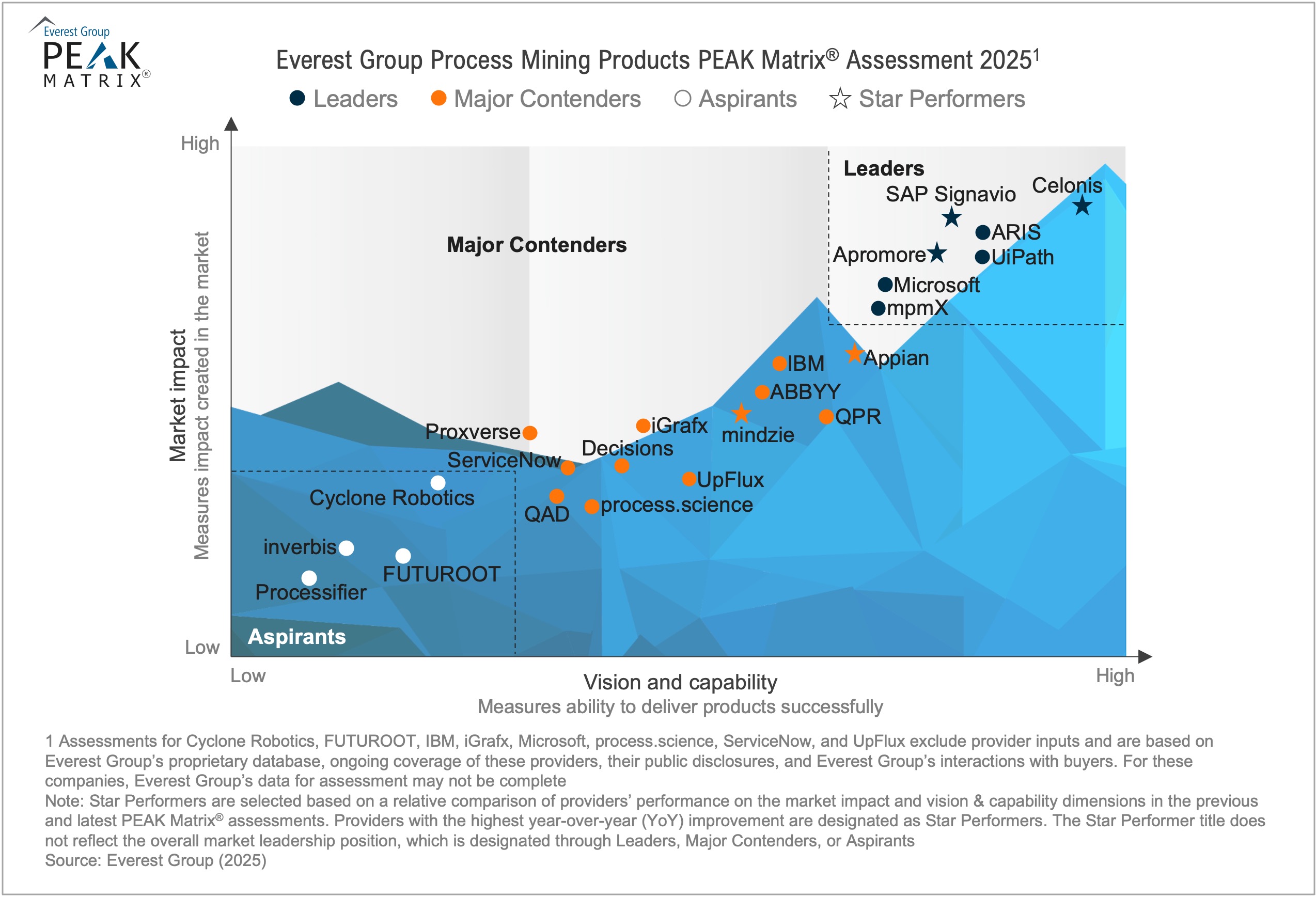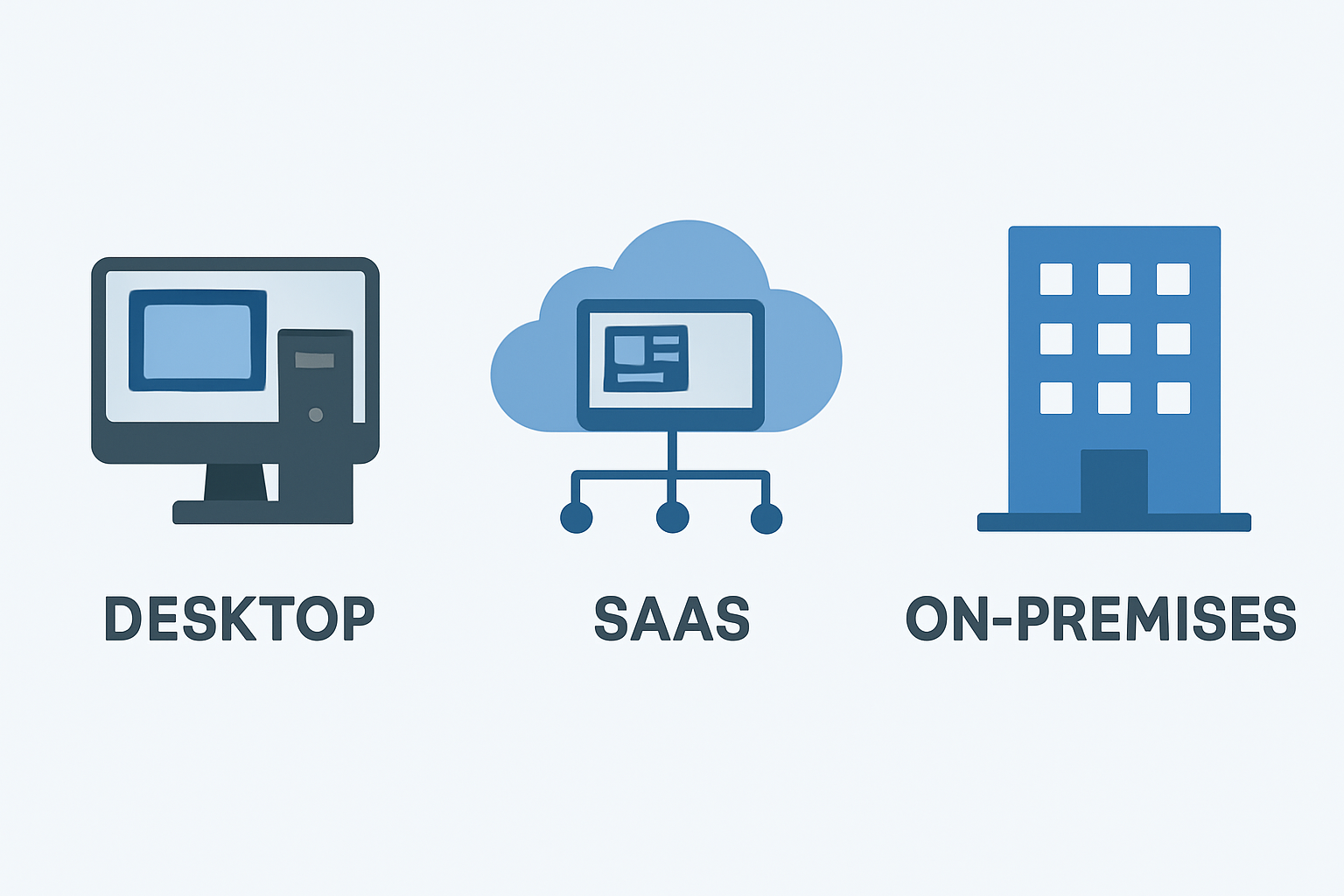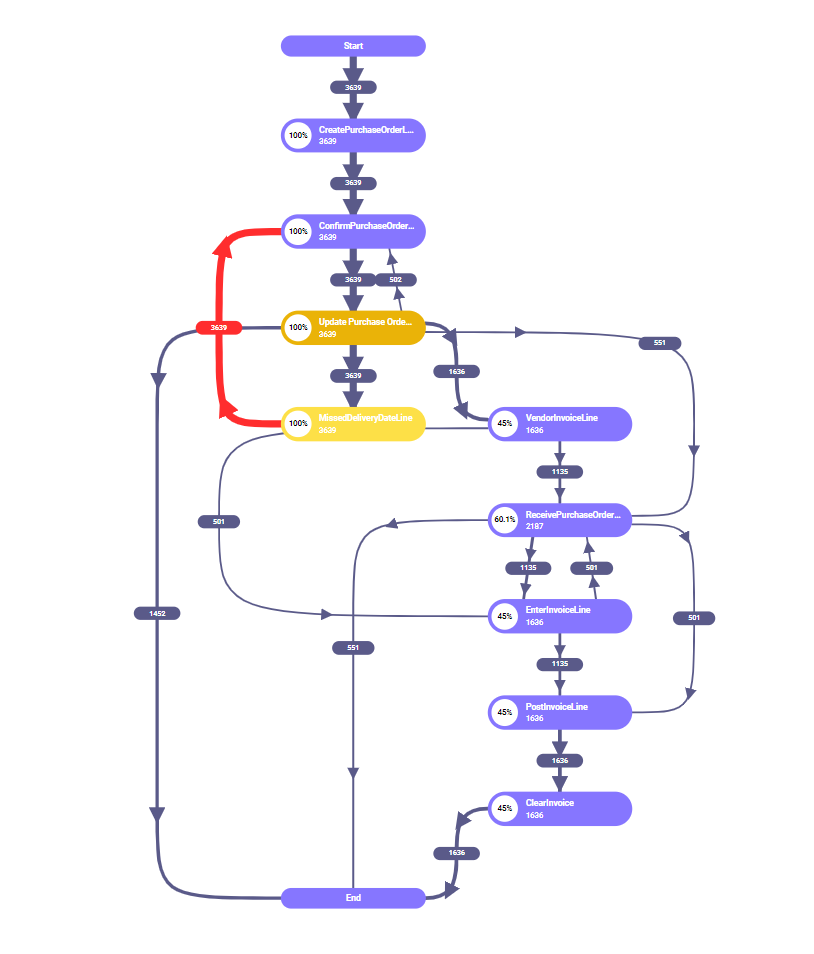How Process Mining Transforms Internal Auditing: Benefits, Challenges, and Best Practices
Internal auditing plays a critical role in ensuring compliance and operational efficiency, but traditional methods often fall short in today’s complex business environment. Process mining transforms auditing by providing a data-driven view of business processes, allowing auditors to identify inefficiencies, uncover risks, and improve accuracy in real time.
This article explores how process mining is reshaping internal audits, highlighting its benefits, implementation challenges, and best practices for integration. Whether you’re an internal or external auditor, process mining offers powerful tools to enhance the audit process and drive continuous improvement.

What Is Process Mining?
Process mining is a cutting-edge technology that uses data to visualize, analyze, and optimize business processes. By extracting and analyzing event logs from your organization’s IT systems, process mining enables businesses to gain a detailed, real-time view of how processes are actually performed, rather than relying on assumptions or static reports.
This technology helps identify inefficiencies, bottlenecks, and areas of non-compliance within workflows, allowing organizations to make data-driven decisions for continuous improvement. Process mining software can map out entire processes, from start to finish, providing valuable insights into every step.
In essence, process mining bridges the gap between data and business operations, offering a clear and actionable roadmap to optimize processes and enhance performance. By leveraging process mining technology, businesses can improve process accuracy, reduce operational costs, and ensure greater compliance and transparency.
Where Process Mining Can Support Internal Audit?
Process mining in internal audit is a powerful tool that enhances audit processes by providing a data-driven approach to understanding and improving business operations. Here are some key areas where process mining can support internal audits:
- Detecting Inefficiencies and Bottlenecks
One of the main benefits of process mining in internal audits is its ability to identify inefficiencies in business processes. By visualizing workflows, auditors can quickly spot bottlenecks, redundant steps, or delays that may be affecting performance. For example, in a procurement process, process mining can highlight where approvals are taking too long or where unnecessary steps are slowing down operations. - Monitoring Compliance and Risk Management
Process mining technology enables auditors to track compliance with internal controls and external regulations in real time. It automatically compares the actual flow of business processes to predefined rules and standards, detecting non-compliance issues early. This proactive approach reduces the risk of compliance breaches and allows for quicker corrective actions. - Improving Audit Accuracy
Traditional audits often rely on sampling methods and subjective assessments, which can lead to errors. Process mining automates data collection and analysis, ensuring a more accurate and comprehensive audit. Auditors can examine entire datasets rather than just a sample, improving the quality of their findings and reducing the likelihood of oversight. - Automating Data Collection and Analysis
Process mining can significantly streamline the auditing process by automating data extraction from various systems. It pulls data from ERP, CRM, and other enterprise systems to generate real-time process maps. This reduces the reliance on manual data collection, lowering the risk of human error and speeding up the audit process. - Enhancing Operational Efficiency
By identifying inefficiencies and suggesting improvements, process mining contributes to overall audit process improvement. It helps auditors focus on high-risk areas and areas of concern, reducing the time spent on low-value tasks and increasing the overall efficiency of the audit function.
Challenges and Solutions in Implementing Process Mining for Auditing

While process mining offers significant benefits for internal audits, its implementation can present several challenges. Below are some common obstacles faced by organizations, along with practical solutions for overcoming them.
1. Data Quality and Consistency Issues
- Challenge: Process mining relies heavily on accurate, clean data to generate reliable insights. Poor data quality, such as incomplete, outdated, or inconsistent data, can lead to inaccurate process maps and misinformed audit conclusions.
- Solution: To overcome this, organizations should prioritize data cleansing before implementing process mining. This involves removing duplicates, correcting errors, and ensuring consistency across data sources. Additionally, adopting data governance best practices and regularly updating the data ensures that the analysis is based on high-quality, reliable information.
2. Complexity in Integrating with Existing Systems
- Challenge: Many organizations use a variety of legacy systems (e.g., ERP, CRM, accounting software), which may not be easily compatible with process mining tools. Integrating process mining with these disparate systems can be complex and time-consuming.
- Solution: To simplify integration, choose scalable process mining software that supports multiple systems and can easily connect with various data sources. Ensuring that the chosen tool is system-agnostic can help streamline integration. Also, working with IT experts during the setup phase can ensure a smooth integration process.
3. Resistance to New Technologies
- Challenge: Employees and audit teams may resist adopting new technologies, especially if they are unfamiliar with process mining or fear that it will disrupt their workflows. This resistance can hinder the successful implementation of process mining.
- Solution: Overcoming resistance requires proper training and clear communication about the benefits of process mining for auditors. Organizations should invest in training programs to upskill audit teams and show them how process mining can enhance their work rather than replace it. Promoting a culture of continuous learning and demonstrating early wins can also help ease the transition.
4. Lack of Expertise in Process Mining
- Challenge: Implementing process mining requires a level of expertise in data analysis and process management. Many audit teams may lack the necessary skills to fully leverage the technology.
- Solution: Organizations should invest in external consultants or hire professionals with process mining expertise to guide the implementation. Additionally, promoting internal knowledge sharing and offering specialized certifications can help develop the necessary skills in-house over time.
5. Ensuring Continuous Monitoring and Updating
- Challenge: Process mining tools provide powerful insights, but without continuous monitoring, organizations risk missing evolving inefficiencies or compliance issues. This can make the initial implementation less effective in the long term.
- Solution: Implementing real-time monitoring is crucial for the success of process mining in audits. Ensure that audit teams regularly review and update process maps to reflect current operations. Using process mining tools with automated alerting features will help auditors stay informed about critical changes or potential risks.
Business Process Management and Process Mining
Business Process Management (BPM) and process mining are two powerful tools that, when used together, can significantly enhance auditing processes. While BPM focuses on the design, execution, and monitoring of business processes, process mining provides a data-driven approach to analyzing those processes in real time. Together, they offer a comprehensive solution for optimizing audit processes and improving transparency.
1. Optimizing Audit Processes through BPM and Process Mining
BPM provides the framework for designing and managing efficient workflows. It helps businesses establish standard procedures and ensure that tasks are completed in a consistent manner. Process mining, on the other hand, allows auditors to visualize and analyze actual workflows based on event logs from business systems. By integrating these two, auditors can gain a clear understanding of how well processes are being executed in practice compared to how they were designed.
When process mining is applied to BPM, auditors can uncover discrepancies between the planned processes and actual execution. This not only helps identify inefficiencies and bottlenecks but also enables continuous process optimization by allowing auditors to make data-driven recommendations for improvements.
2. Identifying Bottlenecks and Inefficiencies
A core benefit of combining BPM and process mining is the ability to quickly identify and address bottlenecks or inefficiencies within business operations. For instance, by mapping out business processes, BPM highlights the ideal flow of tasks, while process mining provides insights into where delays, redundant steps, or deviations are occurring. This helps auditors pinpoint areas where processes are not working as efficiently as intended, enabling them to recommend targeted improvements.
For example, if an audit process involves multiple approvals and process mining reveals that approvals are consistently delayed at a specific stage, auditors can recommend streamlining or automating that stage to improve overall efficiency.
3. Improving Compliance and Risk Management
Both BPM and process mining play a crucial role in improving compliance and risk management. BPM ensures that business processes are designed with compliance in mind, outlining the necessary controls and approvals. Process mining enhances this by continuously monitoring these processes and detecting any deviations or non-compliance with regulatory requirements.
Process mining helps auditors identify instances where processes are not being followed correctly or where regulations are being violated. It also allows for the monitoring of controls in real time, ensuring that compliance risks are detected early. By integrating BPM and process mining, businesses can create a proactive, data-driven approach to managing compliance and minimizing risks.
4. Enhancing Transparency and Accountability
Transparency is key to any successful audit, and both BPM and process mining contribute to this by providing detailed visibility into business operations. BPM sets the expectations for how processes should work, while process mining shows exactly how they are functioning in practice. This level of transparency allows auditors to track every step of the process, understand the root cause of inefficiencies, and hold the appropriate parties accountable for deviations.
By combining these tools, auditors can gain a comprehensive view of business processes, making it easier to detect any inconsistencies or compliance issues and ensure that corrective actions are taken.
How Process Mining Can Help External Auditors?
External auditors and process mining is an increasingly valuable combination that improves audit efficiency and enhances transparency. While internal auditors focus on assessing internal controls and processes, external auditors evaluate financial statements and compliance with regulations. Process mining can benefit both types of auditors by providing real-time, data-driven insights into how business processes operate, uncovering inefficiencies, and ensuring compliance.
1. Supporting External Auditors with Large Datasets
One of the major challenges faced by external auditors is dealing with vast amounts of data, which can be overwhelming and time-consuming to analyze manually. Process mining enables external auditors to analyze large datasets efficiently by automatically extracting and visualizing event logs from business systems. This allows auditors to track processes across the entire organization, rather than relying on small samples.
By using process mining tools, external auditors can quickly pinpoint discrepancies in financial transactions, detect fraud, and verify that accounting practices align with established policies. This approach leads to faster audits and more comprehensive, data-backed conclusions.
2. Improving Audit Efficiency with Process Mining
Process mining enhances audit efficiency by automating many manual tasks involved in traditional auditing. Instead of sifting through records and documents manually, external auditors can use process mining to create process maps that automatically highlight inefficiencies or unusual patterns. This reduces the time spent on data gathering and allows auditors to focus on higher-value tasks, such as identifying risks and making recommendations for improvement.
For instance, process mining can help external auditors identify potential errors in accounting or financial reporting by comparing the actual flow of transactions with the expected workflow. This reduces the time it takes to conduct audits and ensures greater accuracy in the final audit report.
3. Enhancing Transparency and Accuracy
One of the key benefits of process mining is the enhanced transparency it brings to the audit process. External auditors can access a real-time, visual representation of business processes, providing them with clear insights into how transactions flow across various systems. This level of transparency helps auditors detect errors, inefficiencies, and areas of concern that might otherwise be overlooked.
Moreover, process mining ensures greater accuracy in audit reports. By analyzing actual event data, rather than relying on samples or historical assumptions, process mining provides a comprehensive view of the entire process. This leads to more accurate conclusions, reduces the risk of oversight, and helps external auditors provide more reliable financial statements.
4. Identifying Compliance Risks
Compliance with regulatory requirements is a significant focus for external auditors, and process mining plays a critical role in this area. It enables auditors to continuously monitor processes in real-time, ensuring that businesses adhere to established regulations. Process mining tools can flag instances of non-compliance, such as unauthorized transactions, inconsistent procedures, or regulatory violations, giving external auditors the insights they need to address these issues promptly.
For example, if an external auditor is reviewing financial statements, process mining can reveal if the actual processes for reporting and accounting are in line with industry regulations and standards. This ensures that any compliance gaps are detected early, reducing the risk of regulatory fines or reputational damage.
5. Ensuring Data Integrity
Process mining helps external auditors ensure data integrity by automatically tracking the flow of information through different systems. This makes it easier to verify whether the data used in financial reporting is accurate and complete. Auditors can trace any discrepancies back to their source, ensuring that financial statements are supported by reliable and validated data.
Best Practices for Process Mining in Auditing
Implementing process mining in auditing can drastically improve efficiency, accuracy, and transparency. However, to ensure successful implementation of process mining, auditing teams must follow certain best practices. Below are actionable tips that can help organizations leverage process mining tools effectively.
1. Select the Right Process Mining Tools
Choosing the right process mining software is critical for successful implementation. The tool must integrate seamlessly with your existing systems and be scalable to handle future data needs. Look for a solution like Mindzie, a process mining software, which offers comprehensive features for auditing teams. It should allow you to visualize processes, identify inefficiencies, and ensure that the data gathered is actionable.
Consider the following when selecting a tool:
- Integration capabilities with existing business systems (e.g., ERP, CRM, financial systems).
- User-friendly interface to ensure ease of use for auditors with varying levels of technical expertise.
- Customization options for your specific auditing needs.
2. Set Clear Objectives for Process Mining
To get the most out of process mining, establish clear objectives from the outset. What do you hope to achieve with process mining in auditing? Are you aiming to improve compliance, reduce errors, or enhance process efficiency? Setting these goals will help your team focus on the most important metrics and ensure that the insights generated from the data are aligned with your audit objectives.
Key objectives might include:
- Identifying compliance risks and ensuring adherence to regulations.
- Improving the efficiency of audit processes by identifying bottlenecks and inefficiencies.
- Automating manual tasks to free up auditors’ time for more value-added activities.
3. Ensure High-Quality Data
High-quality data is the foundation of effective process mining. Without accurate, complete, and consistent data, the insights gained will be unreliable. To ensure the data quality:
- Cleanse data by removing duplicates, correcting errors, and standardizing formats before starting the process mining analysis.
- Ensure that data comes from reliable sources such as ERP systems or audit logs.
- Implement data governance practices to maintain consistent data quality over time.
Consistently monitoring data integrity ensures that you are making decisions based on reliable and trustworthy information.
4. Implement Continuous Monitoring and Iterative Improvements
Process mining is not a one-time task; it’s an ongoing process that requires continuous monitoring and improvement. After the initial analysis, auditors should regularly review the process maps to detect emerging inefficiencies or compliance risks.
- Set up real-time monitoring to ensure that processes are continuously tracked. This allows auditors to respond to any deviations or anomalies immediately.
- Iterate on findings by using the insights gained to refine processes. Regularly revisit the process maps and data to identify areas for further improvement.
- Adjust audit strategies based on the insights derived from process mining, ensuring that the auditing process evolves as business operations change.
5. Train Your Team and Foster Collaboration
For successful implementation of process mining, it’s crucial to invest in training your auditing team. Ensure they understand the full capabilities of the process mining tools and how to interpret the results.
Encourage a collaborative environment, where auditors can share insights and best practices based on their experience with process mining. This collective knowledge can enhance the effectiveness of the tool and provide richer insights.
6. Maintain Transparency and Communication
Transparency is a core principle of auditing, and process mining tools help achieve it by providing clear, visual representations of business processes. Maintain open communication with all stakeholders about how process mining is being used, the insights gained, and any changes being implemented. This will help ensure that everyone is aligned and aware of audit objectives, and it will encourage buy-in from all teams involved.
Conclusion
Incorporating process mining into auditing practices offers significant advantages, from enhancing transparency and accuracy to improving efficiency and compliance. By adopting best practices, such as selecting the right process mining tools, ensuring high-quality data, and fostering continuous monitoring and iterative improvements, auditing teams can unlock the full potential of this technology. Tools like Mindzie provide the necessary features to automate and streamline audit processes, enabling auditors to focus on higher-value tasks. Ultimately, embracing process mining not only helps auditors deliver more accurate and timely results but also ensures organizations can adapt and thrive in an increasingly complex regulatory environment.
Daniel is a 20 year ventran in enterprise software sales with over 7 years experience helping businesses drive operational excellence.



